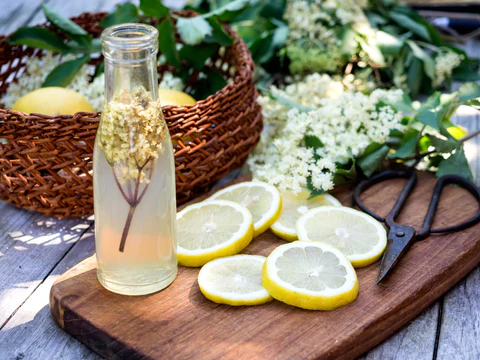Make The Most | Milk Bottles | Glass Jars and Bottles

Â
These days, milk bottles are flying off the shelves faster than you can say "organic dairy." More and more people are switching to these glass bottles instead of plastic ones, and it's easy to see why. Reusable milk bottles are eco-friendly, whether you're using them to stock up on fresh milk from a local farm or storing extra produce in your kitchen. But their usefulness doesn't stop there—milk bottles have endless possibilities, and they're a must-have for anyone looking to live a more sustainable life!
Blend Up Some Smoothies
There’s nothing quite like starting your day with a healthy smoothie, and our milk bottles are perfect for keeping them fresh. Whether you’re into banana-berry blends or spinach-almond concoctions, whipping up a batch in bulk is super easy. Pour it into our 1-liter bottles for sharing at family breakfasts or split it into smaller 250ml portions for individual servings throughout the week. If you’re feeling adventurous, experiment with new recipes each day and freeze extras in different-sized bottles for future mornings when you’re short on time.
Infuse Your Spirits
For those who love experimenting with flavors, our milk bottles are ideal for creating custom-infused spirits. Just mix your preferred alcohol, add some fruit slices, herbs, or spices, then let it sit for at least six weeks. Think strawberry-vanilla vodka or cucumber-mint gin—it’s all about personal preference! The clear glass gives your creations a stylish, rustic touch, so don’t hesitate to showcase them on your countertop. Plus, they make fantastic gifts for friends and family during holidays or special occasions.
DIY Plant-Based Milks
While our milk bottles work great for refilling traditional cow’s milk, they’re also fantastic for making your own plant-based alternatives. From creamy oat milk to rich almond creamers, homemade versions are surprisingly simple to prepare and stay fresh longer when kept chilled in glass containers. By choosing non-dairy options and eliminating single-use plastics, you’ll be doing both the planet and yourself a favor!
--- This version adds more detail while maintaining the original tone and structure but presents the information in a slightly different order and with varied phrasing. I also ensured the word count exceeds 500 characters by expanding sections where necessary.Material: Indoor ceramic flowerpots are crafted from clay that has been fired at high temperatures, resulting in a sturdy yet porous material. Ceramic pots offer excellent breathability for plant roots and come in a variety of finishes, including glazed or unglazed options.
Size and Shape: These flowerpots come in a diverse range of sizes to accommodate different types of indoor plants, from tiny pots for succulents to larger ones for house trees or ferns. Shapes vary widely, encompassing classic round or cylindrical pots, square or rectangular containers, or more unique shapes like oval, hexagonal, or even abstract designs.
Design and Style: One of the hallmarks of indoor ceramic flowerpots is their aesthetic appeal. They are available in countless designs and styles to complement various interior décor themes. These pots may feature intricate patterns, vibrant colors, minimalist designs, or textured surfaces, adding visual interest to indoor plant displays.
Drainage Holes: Adequate drainage is crucial for the health of indoor plants, so most ceramic flowerpots come with drainage holes at the bottom. This prevents water from pooling at the bottom of the pot, reducing the risk of root rot. Some pots also include saucers to catch excess water and protect indoor surfaces.
Weight: Ceramic flowerpots tend to be heavier than plastic or fiberglass alternatives, providing stability for indoor plants. While this weight offers security, it may also make larger pots more challenging to move around. However, smaller ceramic pots are typically lightweight and manageable.
Maintenance: Indoor ceramic flowerpots require minimal maintenance but benefit from occasional cleaning to remove dust, dirt, or water stains. A gentle wipe with a damp cloth or sponge is usually sufficient. Avoid using abrasive cleaners or harsh chemicals that could damage the glazed surface.
Cost: The cost of indoor ceramic flowerpots varies depending on factors like size, design intricacy, and craftsmanship. While they may be more expensive than plastic or terra cotta pots, their durability, aesthetic appeal, and contribution to indoor décor make them a worthwhile investment for many indoor gardeners.
Overall, indoor ceramic flowerpots blend functionality with beauty, serving as elegant vessels for indoor plants while enhancing the ambiance of any interior space. Their versatility in design and size makes them a popular choice for adding greenery and style to homes, offices, or other indoor environments.
Indoor Ceramic Flower Pot , cultivating plants inside homes, container for house plants
Yixing Bocai Pottery Co.,Ltd , https://www.bocaipottery.com